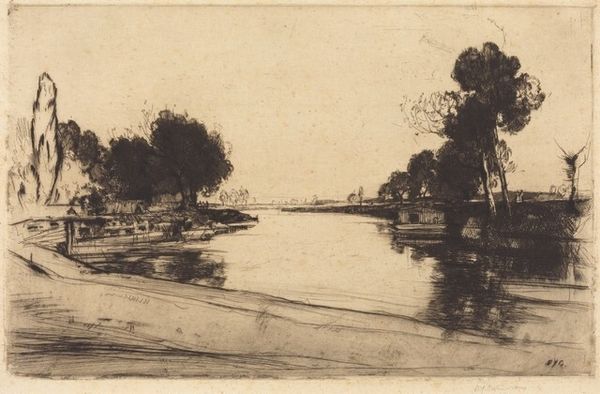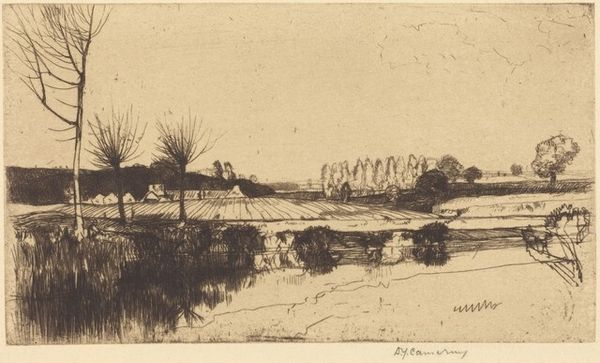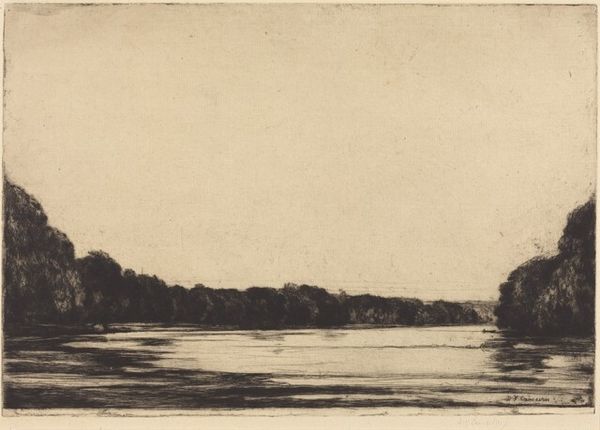
Copyright: National Gallery of Art: CC0 1.0
Editor: Here we have David Young Cameron's "Lowland River: An Etching," created in 1896. The delicate lines and monochromatic palette give it a dreamlike quality, like a memory fading at the edges. What do you see in this piece, especially considering its historical context? Curator: It's interesting that you mention its dreamlike quality. For me, it immediately evokes the complex relationship between industrialization and nature at the close of the 19th century. Etchings like this often presented idealized landscapes as a counterpoint to the rapid urbanization and pollution that defined the era. Editor: That's a powerful perspective. I hadn't considered that it might be a conscious resistance to industrialization. Curator: Exactly. And who benefited from that idealization, and whose stories are silenced? Think about the social and economic transformations happening at that time. Landscapes are never neutral; they reflect power structures. How do you see gender and class reflected here? Editor: I'm not sure I see gender or class specifically, but now that you mention it, the tranquility feels almost too perfect. The lack of any human presence perhaps glosses over the realities of rural life for working-class people. Curator: Precisely! And it begs the question: is this romantic vision truly accessible to everyone? Or does it become a commodity, reinforcing existing inequalities through art? Also consider Cameron's background and intended audience. These are crucial details that color our perception. Editor: It makes me reconsider the scene entirely. What initially seemed like simple beauty now has this layer of social commentary that I didn’t appreciate before. Curator: And that is the power of situating art within its historical and social context. We can move beyond mere aesthetic appreciation and begin to understand its deeper implications. Editor: I’m now realizing how incomplete my initial read was without this deeper historical understanding. Curator: Hopefully, it shows how artworks engage in larger conversations, revealing complex social relations through their representation of the world.
Comments
No comments
Be the first to comment and join the conversation on the ultimate creative platform.













